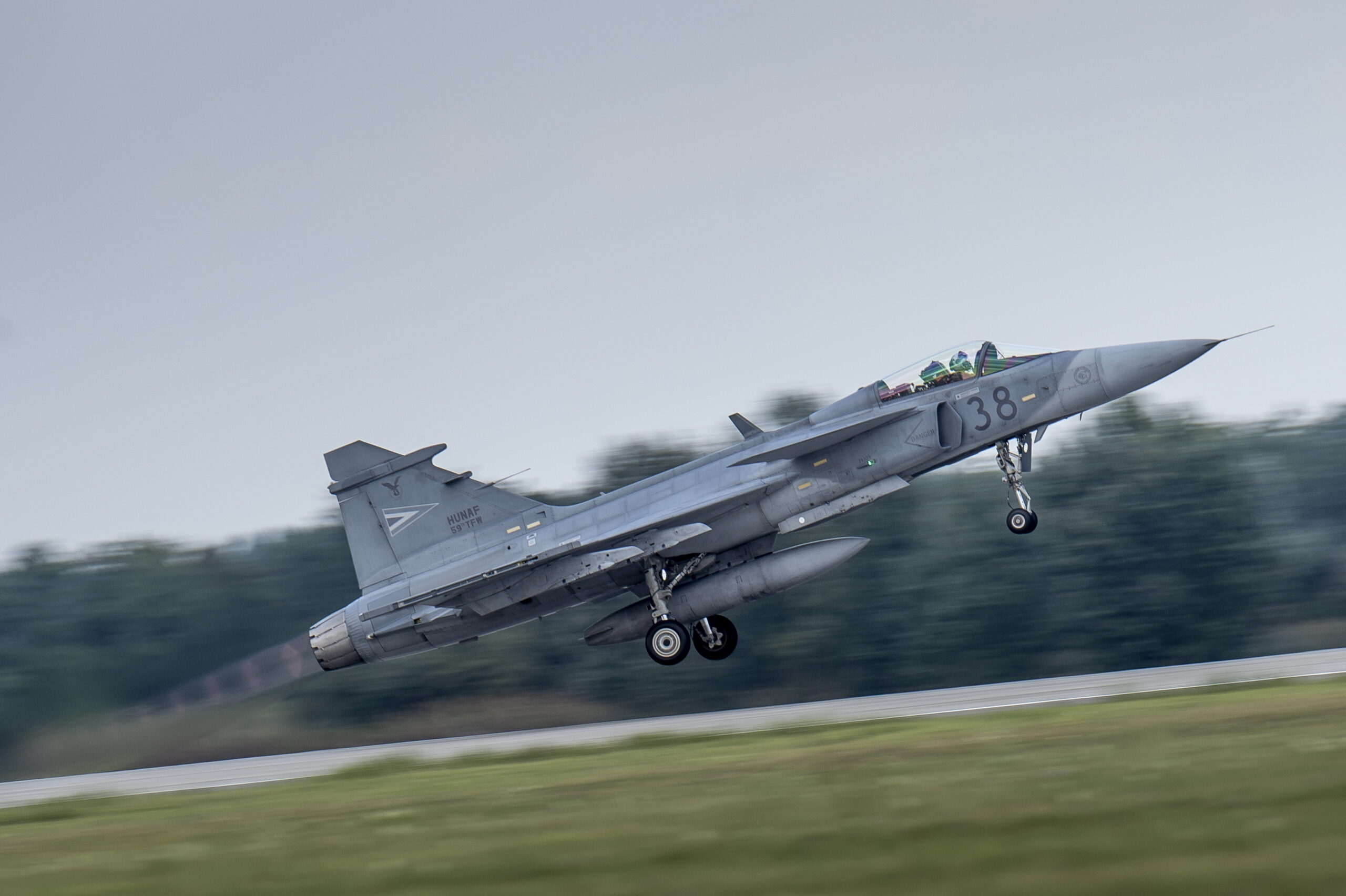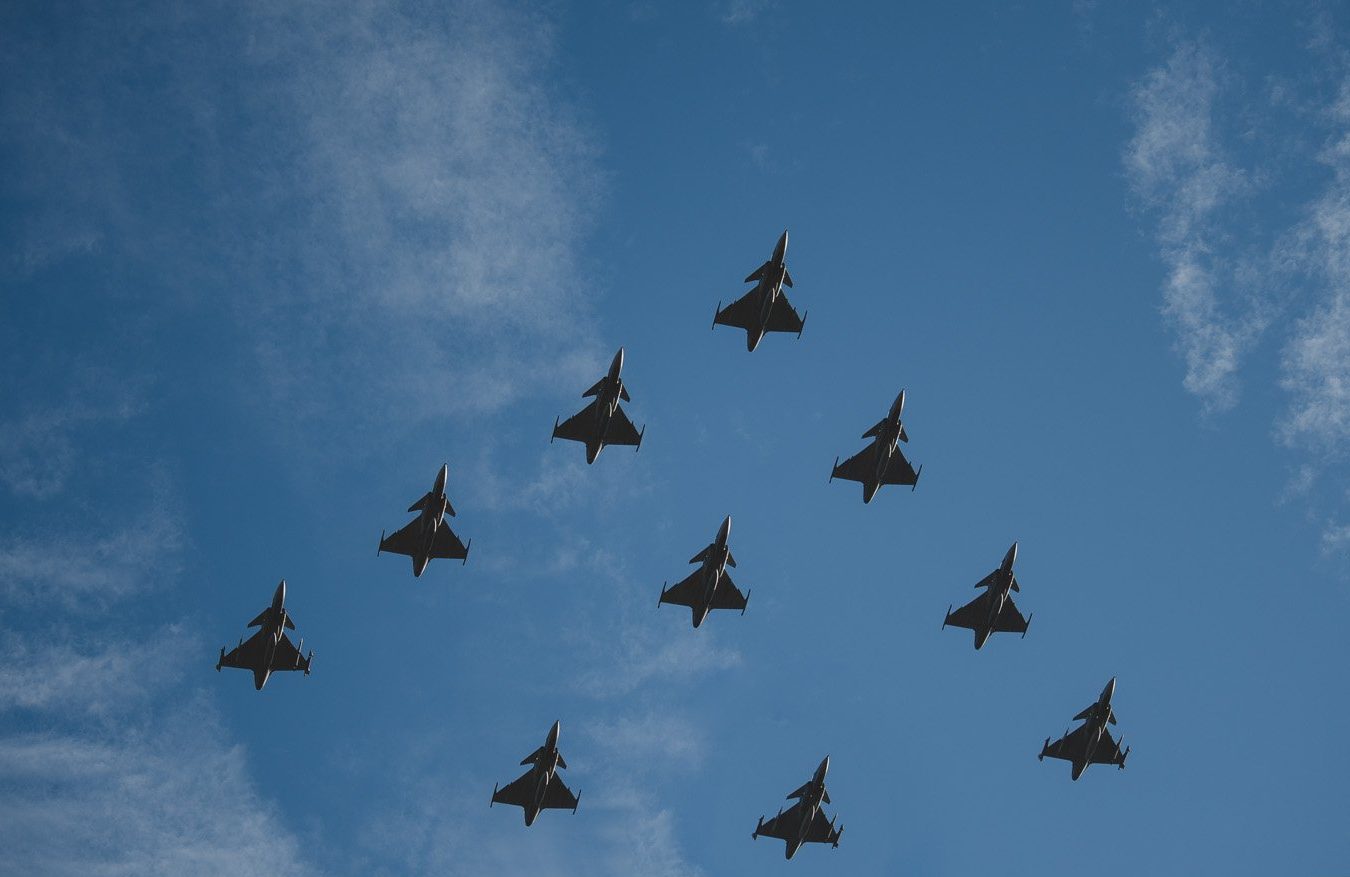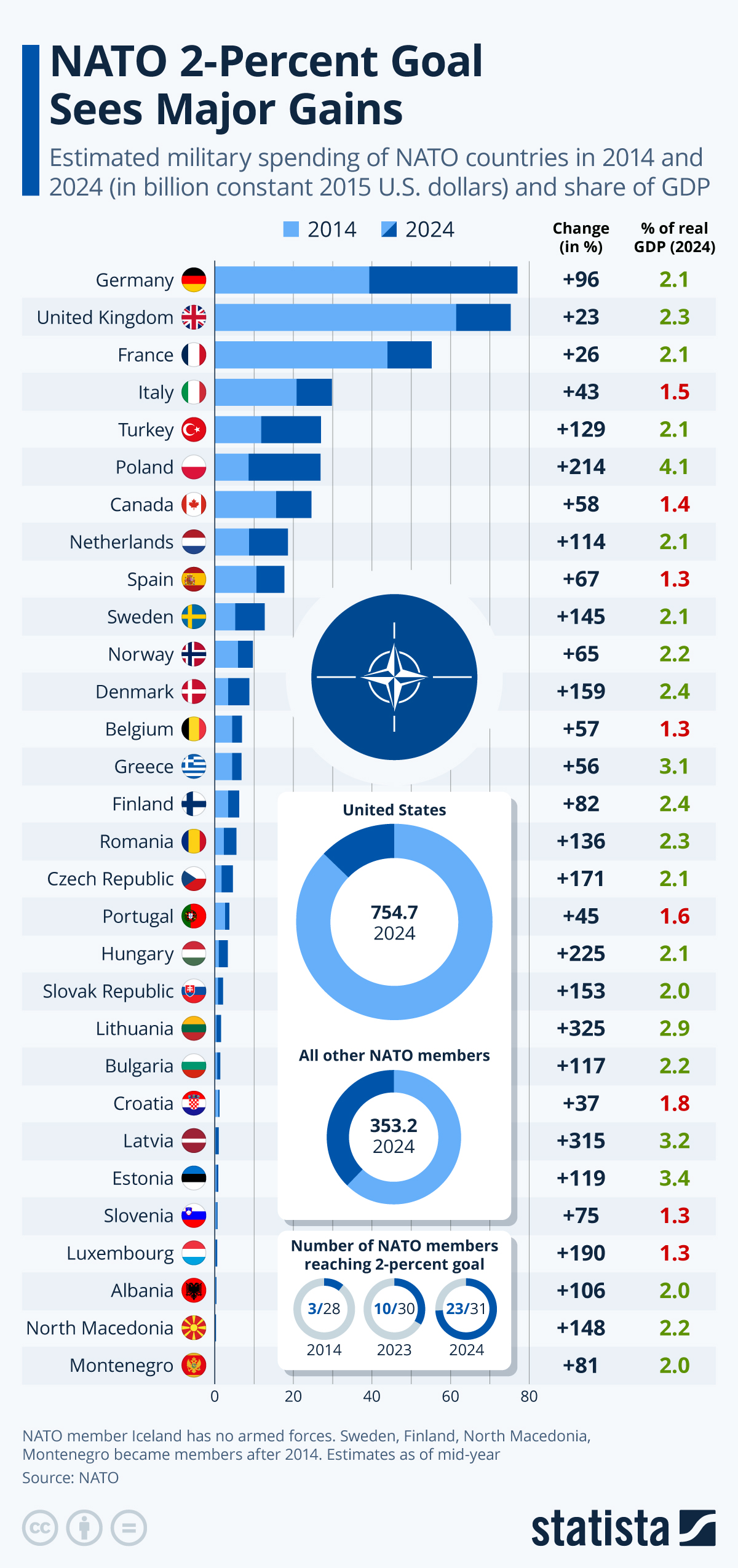
We are at the forefront of NATO in spending almost half of our defense budget on development, said the Foreign Minister.Continue reading

Only two Baltic countries have increased their military spending more than Hungary in the last 10 years. However, many NATO members are still falling short of the Alliance’s objectives, reports Világgazdaság.
In June last year, 23 of the 32 members of the association achieved the target of spending two percent of the GDP on defense, a huge improvement on the 10/31 achieved a year earlier. Interestingly, examined in 2015 dollars, Hungary has seen the third largest increase in spending over the 10 years, 225 percent, with only Lithuania (325 percent) and Latvia (315 percent) ahead of Hungary, according to Statista.
 Source: Statista
Source: Statista
Poland is the biggest arms spender as a share of GDP, spending 4.1 percent of its output. This proportion is even higher than that of the United States, standing at 3.4 percent of GDP.
Hungary currently meets the target with 2.1 percent.
The nine NATO members that fall short of the two percent target are Italy, Spain, Portugal, Canada, Belgium, Luxembourg, Slovenia, Croatia, and Iceland. Sweden and Finland, which joined the alliance in the last two years, have both been able to meet the requirements.
Meanwhile, it is worth noting that US President Donald Trump recently spoke of the need to gradually increase military spending to five percent of GDP, reported CNBC.
Via Világgazdaság, CNBC; Featured photo via Honvédelem.hu